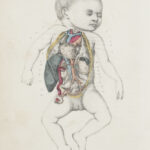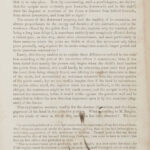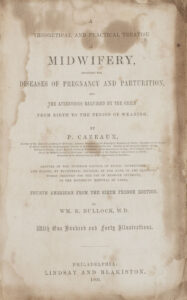“When a book reaches its sixth edition,” we read here, “a preface is hardly needed.” Still today, the continuous reprinting of a work is often a mark of its enduring value. When it came to obstetrics in the latter half of the 19th century, both Europeans and Americans turned to Pierre  Cazeaux, an unchallenged expert who had served on the Faculty of Medicine at the University of Paris and worked at one of Paris’s largest lying-in hospitals. As late as 1884, when the seventh American edition of this work was published, The Weekly Medical Review still lauded it as “a treatise of rare merit and value.”
Cazeaux, an unchallenged expert who had served on the Faculty of Medicine at the University of Paris and worked at one of Paris’s largest lying-in hospitals. As late as 1884, when the seventh American edition of this work was published, The Weekly Medical Review still lauded it as “a treatise of rare merit and value.”
 A book filled with practical information, Cazeaux’s treatise was no doubt meant to be used. MIT’s copy – a recent gift in memory of Elliot T. Adams, Class of ’21 – bears this out. Its original leather binding is falling off, the spine is broken in several spots, and a stain on page 431 strongly resembles that of human blood.
A book filled with practical information, Cazeaux’s treatise was no doubt meant to be used. MIT’s copy – a recent gift in memory of Elliot T. Adams, Class of ’21 – bears this out. Its original leather binding is falling off, the spine is broken in several spots, and a stain on page 431 strongly resembles that of human blood.

